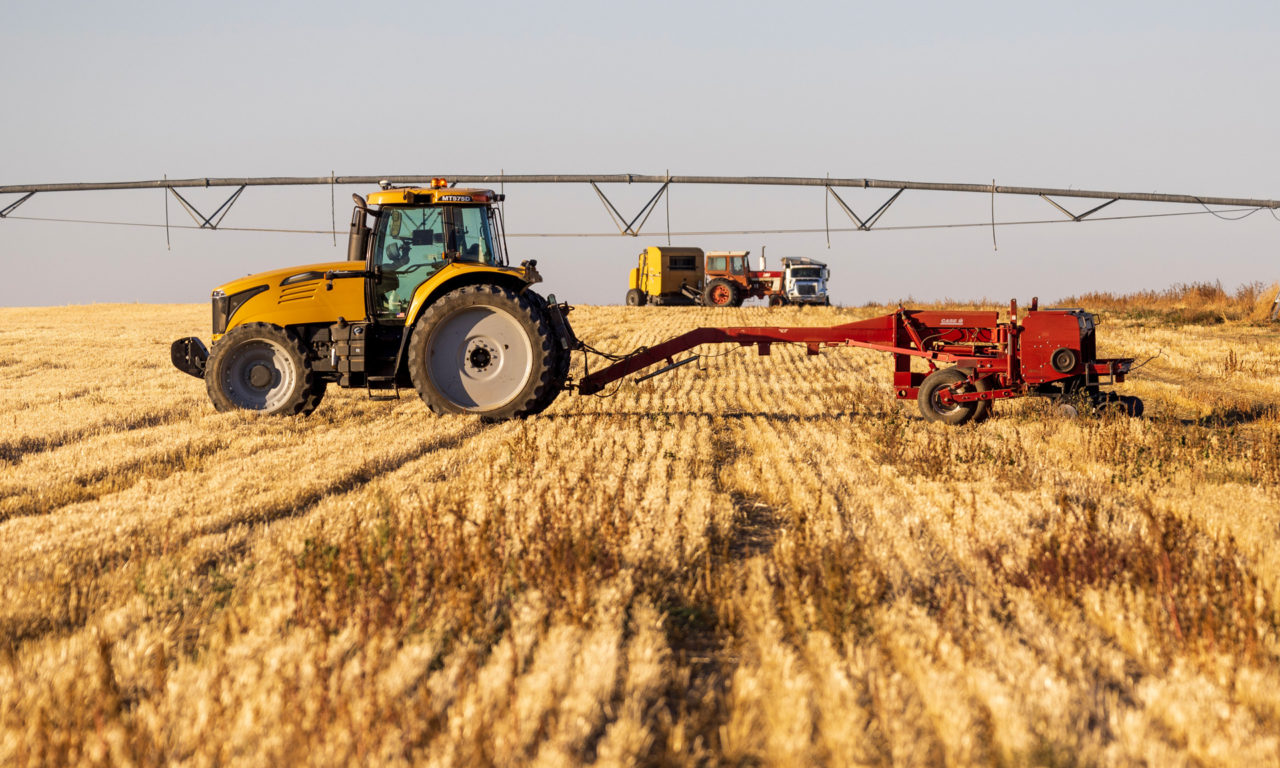Soil health, regenerative agriculture, and sustainable. These buzzwords pop up everywhere—in agricultural circles, in news reports, and on social media, but the terms are rarely defined for the reader.
So, what do these words mean? More importantly, what do they mean for the 25,000 acres managed by the Boulder County Parks & Open Space (BCPOS) agricultural program?
The Boulder County Office of Sustainability, Climate Action, and Resilience defines sustainability as “the use, development and protection of resources in a way that enables Boulder County residents to meet their needs and maintain a high quality of life, without compromising the ability of future residents to do the same.” For BCPOS agricultural properties, that means conserving the natural resources upon which the production of food, fiber, and fuel depend. We also place a special focus on using water in an efficient and effective manner, as well as preserving and enhancing the soil. Our guiding document for how to implement sustainability on BCPOS agricultural properties is the Cropland Policy, which was developed in 2011 by an advisory group.
“Regenerative agriculture” has attracted wide attention over the last few years. Unlike organic production, no accreditation system or certifying body exists to attest that a farm’s operations adhere to independently established standards. In fact, there isn’t even an agreed-upon definition of “regenerative.” The internet is filled with assorted authorities and producers offering a variety of definitions from “farming to limit soil disturbance” to “farming to maximize carbon sequestration.” Any commonality seems to be the emphasis on practices seen as beneficial to the soil or the environment. One common example is the application of compost; another is the use of cover crops (crops grown not to produce a direct product but to protect or enhance the soil and the field as a system).
Soil health takes a wider view, looking at how the soil functions as a system rather than employing individual practices in isolation. Soil health is the ability of a soil to perform ecosystem services, such as cycling nutrients, filtering and storing water, providing a physical medium for the growth of plants, and a habitat for organisms. A healthy soil maximizes those services within the constraints of the soil’s physical properties, location, climate, and management system.
Soil Health Principles
There are five soil health principles that set the stage for optimal functioning. Although there might be minor differences in word choice among soil health advocates, the concepts underlying the principles are consistent:
- Maintain soil surface cover.
- Maximize plant diversity.
- Minimize soil disturbance.
- Maintain continuous growing plant life.
- Incorporate livestock.
BCPOS agricultural properties host a diversity of crops and cropping systems. The implementation of the soil health principles into an operation can take on many different forms based on the type of agricultural operation and the property features. For example:
Soil Surface Cover: Soil surface cover physically protects the soil from wind and water erosion and minimizes water lost to evaporation. Surface cover can be achieved through the use of perennial grasses in pastures, using harvest equipment designed to maximize crop residues left in the field or reducing tillage practices that bury residues.
Plant Diversity: Plant diversity can be achieved through crop rotations (planting different crops in subsequent growing seasons), intercropping (growing a different crop or cover crop in the space between crop rows), or planting a variety of grasses in a pasture.
Soil Disturbance: Tillage has a tremendous impact on soil functioning, disrupting soil structure, increasing the loss of organic matter and moisture, and heightening the risk of erosion. Minimizing tillage by moving to no-till production or reducing the number of tillage events, the amount of land disturbed by tillage, or shifting to less-invasive tillage methods and equipment, such as vertical tillage, can all reduce soil disturbance. Minimizing the amount of equipment used in other field operations also helps to protect the soil.
Continuous Plant Life: The area around plant roots (called the rhizosphere) is a lively hub of microbial activity. Plants push sugars and other compounds out through their roots, attracting microbes and influencing nutrient cycling. The more months of the year a living plant is in the ground, the more active the underground community can be and the more ecosystem services the soil can perform.
Livestock Integration: Usually the hardest principle to implement because of infrastructure and water access constraints, incorporating livestock can yield huge benefits that make the costs and difficulties worthwhile. Direct grazing can reduce weed pressure, influence plant diversity, and mitigate fire risk as well as reduce the pollution and carbon emissions produced by equipment used in harvest and transportation.
The soil health principles allow us to move beyond buzzwords and trendy social media posts. A soil health perspective emphasizes the integrated systems of microbial activity, plant life cycles, livestock, climate, and active agricultural management that lead to truly sustainable production. BCPOS Agricultural and Water Division staff will be working in 2022 to develop a soil health program to collaborate with our tenant producers in their sustainability efforts and to ensure Boulder County has thriving agricultural lands for generations to come.


